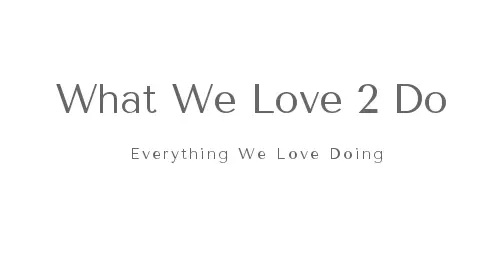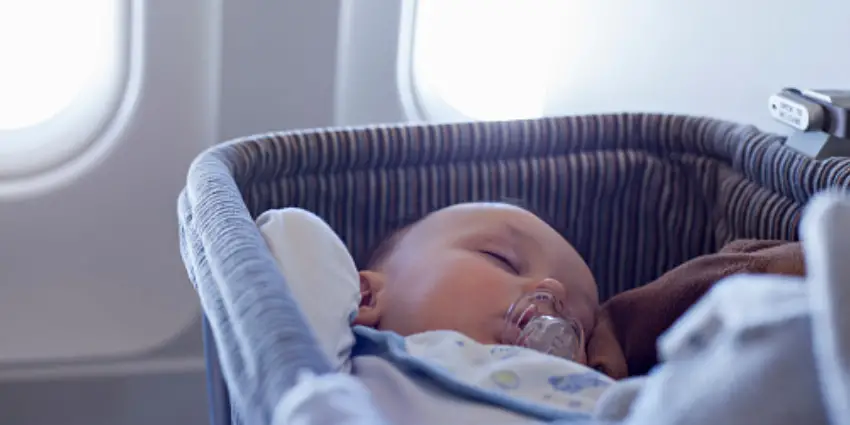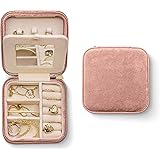Travelling can be an adventure, especially when you have a baby in tow. From packing their essentials to making sure you’ve got everything under control, travelling with a little one requires a little extra thought and preparation. One of the many decisions that parents face when flying with their baby is choosing the perfect airplane seat. The eternal debate between window or aisle seat with baby comes down to personal preferences and your baby’s unique needs. .
In this comprehensive article, we’ll examine the pros and cons of each option to help you make the best choice for your family.
Table of Contents
The Tale of Two Seats: Window vs. Aisle
The Window Seat
Pros
The window seat is an appealing option for many reasons. For one, it provides a natural barrier between your baby and the rest of the passengers. This can be particularly helpful if your baby is easily distracted or tends to grab things. The window also acts as a built-in source of entertainment; your little one might be fascinated by the view outside, which can help keep them occupied during the flight.
Another advantage of choosing the window seat with a baby is the extra privacy it provides, especially during feeding times. If you need to breastfeed, the window seat can give you a bit more seclusion than the aisle seat.
Cons
Despite the perks, the window seat also has its disadvantages. For instance, it can be more challenging to get in and out of the seat with a baby, especially if the passengers in the middle and aisle seats are asleep or watching movies. This could make diaper changes and restroom trips a bit more cumbersome.
The Aisle Seat
Pros
The aisle seat is a popular choice for parents because of the easy access it provides. It makes getting up for diaper changes, restroom visits, and walking with a fussy baby much more convenient. Aisle seats also allow for quicker and smoother boarding and deplaning, which can be a blessing when you have a tired or restless baby.
Another advantage of the aisle seat is the extra legroom it provides. While this may not be a significant factor for your baby, it can make a big difference to your comfort level during the flight.
Cons
The downside of the aisle seat is the lack of privacy and the increased likelihood of disturbances. With people walking by and the flight attendants serving food and drinks, it can be challenging to maintain a calm and quiet environment for your baby. Additionally, there’s the risk of your baby’s hands or legs being bumped by passengers or service carts.
Read More: About How to Travel Light with Baby
Additional Tips for Flying with a Baby
Regardless of whether you choose a window or aisle seat, there are some additional tips to help ensure a smoother and more enjoyable flight with your baby:
- Timing is Everything
Try to book your flight during your baby’s usual nap or sleep time. This can increase the chances that your baby will sleep during the flight, making the journey more comfortable for everyone.
- Dress for Comfort
Dress your baby in layers to accommodate varying temperatures on the plane. Opt for comfortable, soft clothes that allow for easy diaper changes and ensure your baby is warm and cozy throughout the flight.
- Bring a Baby Carrier
A baby carrier can be a lifesaver when navigating airports and boarding the plane. It allows you to have your hands free while keeping your baby close and secure.
- Pack Entertainment and Comfort Items
Bring a few familiar toys and comfort items, such as a favorite blanket or stuffed animal, to help your baby feel more at ease during the flight. Additionally, pack age-appropriate activities or toys to keep your baby entertained and engaged.
- Prepare for Ear Pressure
Changes in cabin pressure can cause discomfort for babies, especially during takeoff and landing. To help alleviate this, offer your baby a pacifier, bottle, or breastfeed during these times to encourage swallowing, which can help equalize the pressure in their ears.
- Seek Assistance from Flight Attendants
Don’t hesitate to ask for help from flight attendants if you need assistance with your baby or have any questions. They are usually more than willing to help make your flight more comfortable and can provide useful tips and resources.
- Practice Patience and Flexibility
Flying with a baby can be unpredictable, and even the best-laid plans can go awry. Be prepared to adapt to your baby’s needs and remain patient and understanding. Remember that other passengers were once babies too, and most people will empathize with your situation.
In the end, the choice between a window or aisle seat with a baby will depend on your individual needs and preferences. Consider the pros and cons of each option and make a decision that best suits your family’s requirements. By following these additional tips and maintaining a positive attitude, you’ll be well on your way to a successful and enjoyable flight experience with your little one.
Extra Measures for a Stress-Free Flight
While the choice between a window or aisle seat with a baby is crucial, there are additional measures you can take to ensure a stress-free and pleasant flight experience for you and your baby.
- Familiarize Yourself with Airline Policies
Each airline has different policies regarding travelling with infants, such as fees, age restrictions, and baggage allowances. Familiarize yourself with these policies and make any necessary arrangements in advance to avoid surprises on the day of travel.
- Reserve Seats in Advance
Whenever possible, reserve your seats in advance to ensure you get your desired seating arrangement, whether it’s a window or aisle seat. This can also help you avoid the stress of not being seated together as a family on the plane.
- Pack Extra Supplies
It’s always better to be over-prepared when flying with a baby. Bring extra diapers, wipes, clothes, and snacks in case of delays or unexpected incidents. This will give you peace of mind and allow you to focus on enjoying the journey.
- Bring Documentation
If your baby is travelling internationally or qualifies for a lap infant ticket, make sure you have all necessary documentation, such as passports, birth certificates, and vaccination records. Having these documents readily available will help expedite the check-in process and ensure a smooth travel experience.
- Choose Direct Flights
When possible, choose direct flights to minimize layovers and the hassle of navigating multiple airports with a baby. Although direct flights might be more expensive, the convenience and reduced stress can be well worth the extra cost.
- Arrive Early
Give yourself plenty of time to navigate the airport, check in, go through security, and board the plane. Arriving early can help reduce stress and allow you to handle any unexpected situations with more ease.
- Stay Hydrated and Well-rested
Travelling can be exhausting, especially for new parents. Ensure you are well-rested before your flight and stay hydrated throughout the journey. Taking care of yourself will make it easier to care for your baby and handle any challenges that arise.
- Connect with Other Parents
Don’t be afraid to connect with other parents on the plane. They can offer support, advice, and understanding, making the flight more enjoyable and less isolating.
By considering the advantages and disadvantages of window and aisle seats, preparing thoroughly, and implementing these additional measures, you’ll be well-equipped to navigate the challenges of flying with a baby. With the right mindset and a well-thought-out plan, you can make your flight experience a memorable and enjoyable part of your family’s travels.
Read More: About How to Clean Baby Bottles On Plane
Creating a Positive In-flight Environment
Beyond choosing between a window or aisle seat, ensuring a positive in-flight environment for your baby is essential for a pleasant flying experience. Here are some additional tips to help you create a comfortable atmosphere for your baby during your journey.
- Manage Cabin Noise
Airplane cabins can be noisy, which may disturb your baby or make it difficult for them to sleep. Consider bringing noise-cancelling headphones or soft earplugs specifically designed for babies to help reduce the impact of the cabin noise.
- Use Comforting Routines
Incorporate familiar routines from home to help your baby feel secure during the flight. For example, if you usually read them a bedtime story or sing a lullaby before sleep, continue to do so on the plane. This can help signal to your baby that it’s time to rest and provide a sense of familiarity and comfort.
- Encourage Movement and Play
When it’s safe and allowed, encourage your baby to move around, stretch, and play, particularly if it’s a long-haul flight. This can help keep them entertained and alleviate restlessness.
- Keep Calm and Reassure Your Baby
Your baby can pick up on your emotions and stress, so try to remain calm and composed throughout the flight. If your baby becomes fussy or upset, reassure them with gentle touches, soothing words, and a calm demeanor.
- Be Prepared for Changes in Cabin Temperature
Cabin temperatures can fluctuate during a flight, so it’s essential to dress your baby in layers and bring a light blanket to ensure they stay comfortable throughout the journey. Being prepared for temperature changes will help your baby stay cozy and content.
- Seek Out Family-friendly Airports and Airlines
When planning your trip, consider choosing airlines and airports that offer family-friendly amenities and services, such as dedicated family lanes at security, complimentary strollers, or play areas for children. These services can make your travel experience more enjoyable and stress-free.
- Communicate with Fellow Passengers
A little communication goes a long way in creating a positive in-flight environment. If you sense that your baby’s fussiness is bothering nearby passengers, acknowledge the situation and apologize if necessary. Most people will appreciate your understanding and may even offer support or assistance.
By implementing these tips and strategies, you can create a positive in-flight environment for your baby and ensure a more enjoyable flying experience for your entire family. Remember that flexibility, preparation, and a positive attitude are key to successfully navigating the challenges of flying with a baby, whether you choose a window or aisle seat.
Read More: About Tips for Going on a Vacation Without a 3 Month Old Baby
Frequently Asked Questions (FAQs)
The best place to sit on a plane with a baby depends on your preferences and your baby’s needs. If privacy and a natural barrier are essential to you, a window seat might be the best choice. On the other hand, if easy access and additional legroom are your priorities, the aisle seat could be a better option.
There is no significant difference in safety between the window and aisle seats. The most important factor in ensuring your baby’s safety on a flight is to follow the airline’s guidelines and use an appropriate child restraint system when required.
The decision to fly with an infant on your lap or in a separate seat depends on your preferences, budget, and the child’s age. While it is generally more affordable to fly with a baby on your lap, purchasing a separate seat and using an approved child restraint system can provide additional safety and comfort for your baby.
The hardest age to fly with a baby can vary depending on the child’s temperament and development. However, many parents find that the toddler stage (between 1 and 3 years old) can be particularly challenging due to increased mobility, curiosity, and potential for tantrums. At this age, children may have difficulty staying seated and may not fully understand the concept of waiting or being quiet for extended periods.
The main disadvantage of an aisle seat is the lack of privacy and the increased likelihood of disturbances. With passengers walking by and flight attendants serving food and drinks, it can be more difficult to maintain a calm and quiet environment for your baby. Additionally, there is the risk of your baby’s hands, legs, or belongings being bumped by people passing by or service carts.
The primary disadvantage of a window seat is the limited access to the aisle, which can make getting in and out of the seat more challenging. This can be particularly inconvenient when travelling with a baby, as it may require frequent trips to the restroom for diaper changes, soothing a fussy baby, or simply needing to stretch your legs.
The safest seat for a baby seat depends on the specific aircraft and airline guidelines. In general, the safest place for a baby seat is in a rear-facing position and away from any potential impact zones, such as the bulkhead. It is essential to follow the airline’s guidelines and use an approved child restraint system when required.
Making the Decision: Window or Aisle Seat with Baby
In conclusion, the choice between a window or aisle seat with a baby comes down to personal preferences and your baby’s unique needs. While the window seat offers more privacy and a natural barrier, the aisle seat provides easier access and additional legroom. It’s essential to weigh the pros and cons of each option and consider factors such as your baby’s age, temperament, and the flight’s duration when making your decision.
Remember that no matter which seat you choose, the key to a successful flight with a baby lies in preparation and flexibility. Make sure to pack all necessary items, such as snacks, toys, and a change of clothes, and be prepared to adapt to your baby’s needs throughout the flight. With some planning and patience, you can make flying with a baby a smooth and enjoyable experience for both you and your little one.








